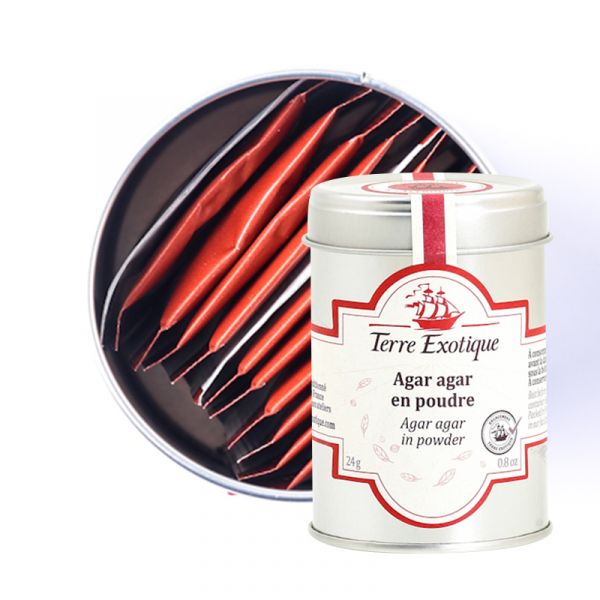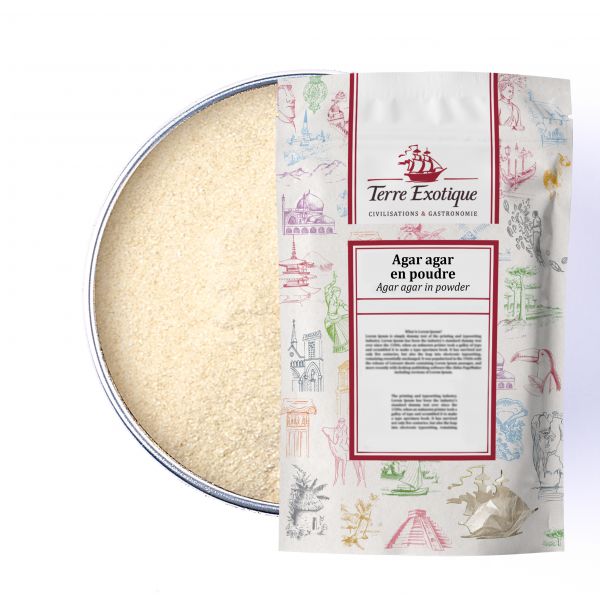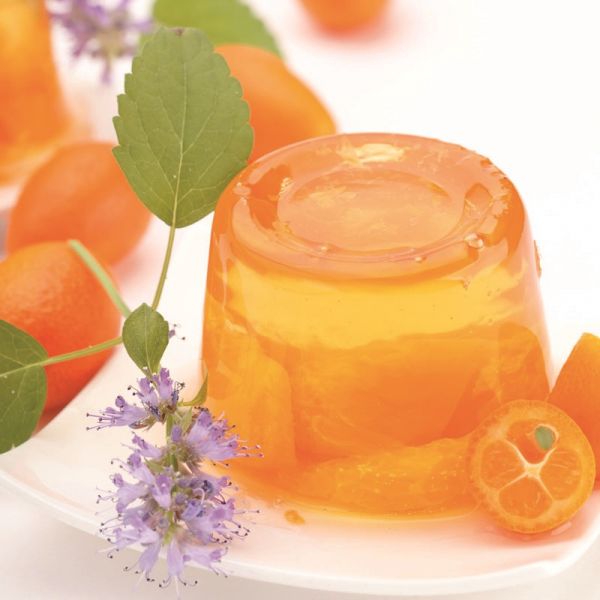





How to Incorporate Agar Agar into Your Cooking?
In the kitchen, agar agar is currently very trendy, increasingly replacing gelatin. It is a completely natural product derived solely from plant substances, with virtually zero caloric value, while its gelling power is significantly higher than that of gelatin. These qualities are the reason for its meteoric success. Just half a teaspoon of agar agar is enough to make a flan, mousse, or even a terrine!
Some Recipe Ideas for Using Agar Agar
- Fresh Fruit Jelly: Prepare a delicious fresh fruit jelly by blending fresh fruits (strawberries, raspberries, mangoes) with sugar. Add agar agar to the mixture, bring it to a boil, then pour it into individual molds to obtain gelled portions.
- Vanilla Panna Cotta: Make a vanilla panna cotta by heating milk, cream, sugar, and vanilla. Add agar agar, bring to a boil, then let it set in the refrigerator until the panna cotta solidifies.
- Fruit Pearls for Salad: Create gelled fruit pearls to enhance your salads. Mix fruit cubes with juice, add agar agar, heat, then drop drops of the mixture into cold oil to form pearls.
- Cold Cucumber Soup with Dill: Prepare a cold cucumber soup by blending cucumbers with dill, yogurt, and agar agar. Refrigerate until the soup takes on a gelled consistency.
- Savory Vegetable Flans: Create savory vegetable flans by mixing sautéed vegetables with cream, eggs, and agar agar. Bake until the flans are firm.
- Grilled Salmon with Spice Mix: Season salmon fillets with crushed roasted spice mix and grill them for a tasty fish option.
The Taste of Agar Agar
From an aromatic standpoint, agar agar is neutral, meaning it does not add a distinctive flavor to culinary preparations. Its power lies in its ability to create gelatinous textures without altering the taste of the dishes. That's why it's often preferred in making desserts, jellies, panna cotta, and other preparations where texture is crucial without compromising the aromatic profile of the main ingredients.
Agar Agar, a Complex Algae
The origin of agar agar is more complex than it seems. It appears as a simple white powder, odorless and tasteless, while it is a mucilage obtained from several red algae species, namely Gelidium cartilagineum or Gracilaria confervoide. Agar agar is obtained through a lengthy manufacturing process:
- Algae are harvested on the Pen Lan beaches, a Natura 2000 classified site.
- They are then washed and dried multiple times.
- The algae are subsequently brought to a boil.
- Finally, once cooled and dehydrated, this mucilage forms into thin strips that are ground into powder.
Agar Agar Through Time
Agar agar has a long history dating back to the Far East, where it has been used for centuries. Its origin is associated with Japan, where the red algae Gracilaria, used to produce agar agar, was traditionally harvested. The term "agar" is derived from the Malay word "agar-agar," which means "jelly." The use of agar agar has been documented in Japan since the 17th century, where it was used to gel soups and desserts. Its popularity then spread to Southeast Asia and other parts of the world.
The Discovery by Anselme Payen
In the 19th century, agar agar garnered increasing interest in the Western scientific community. In 1859, the German chemist Anselme Payen played a crucial role in successfully analyzing and commercializing agar agar. This breakthrough paved the way for more widespread use of agar agar in the food industry, where it sometimes replaced animal-derived gelatin in various preparations. The introduction of agar agar in the West not only diversified the available gelling options but also contributed to meeting the needs of different dietary communities, especially those favoring plant-based ingredients.
| Allergen | Absence |
|---|---|
| Native country | ITALIE |
| Genus and botanical species | Gracilaria gelidium |
| Ingredients | agar agar |
| Nutritional Info | VN Energie pour 100 g (energy for 100g) : 1025.1 kJ / 245.5 kcal VN Matière grasse (fat) : 0.3 g Dont acide gras saturés (of which saturated fat) : 0.06 g VN Glucides (carbohydrate) : 56.3 g Dont sucres (of which sugars) : 3 g VN Protéines (protein) : 4.4 g Vn Sel (salt) : 0.1 g |
| TRACES EVENTUELLES D'ALLERGÈNES | céleri, sésame, moutarde, fruits à coques. |
 Français
Français 